Why the Skin of Presidential Candidates Is a Mess
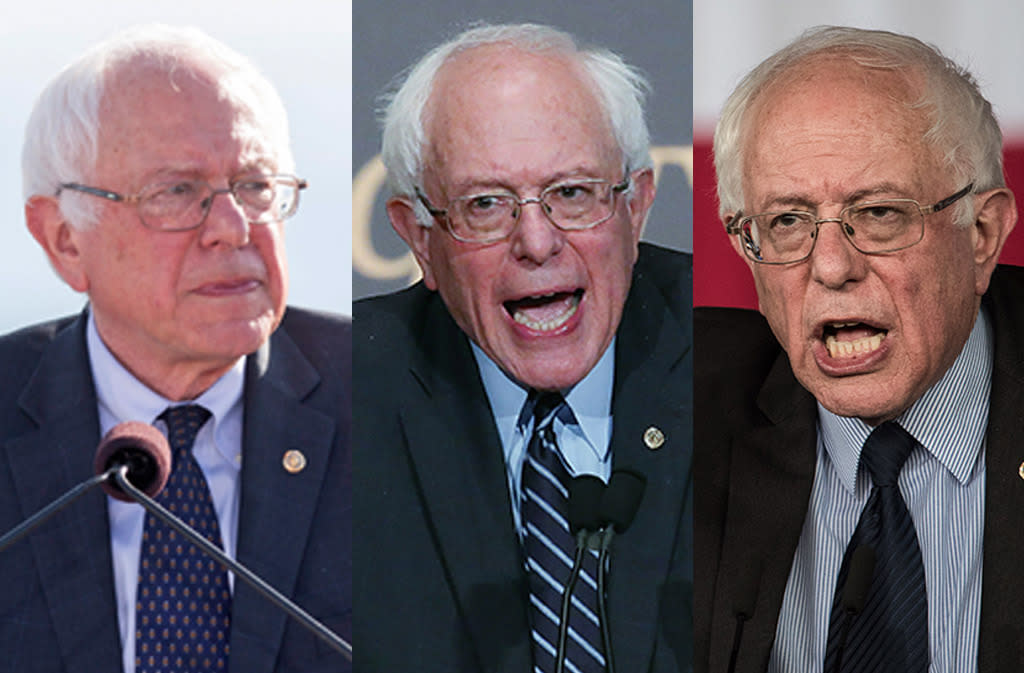
Why is Bernie’s skin as irritated as he is? (Photo: Getty Images)
If you’re thinking that Hillary, the Donald, Bernie, Ted, and John are looking a bit worse for wear lately, you’re not imagining it.
Campaigns are unrelenting in demands on energy, stamina, and brain power — but experts involved in keeping politicians looking sharp say that while a cup of coffee or power nap can help mask these ceaseless hazards to help politicians carry on, their skin is what takes the most visible toll of all.
Related: This One Thing You Do Every Day Is Worse for Your Skin Than Smoking
“It’s that drawn-out redness — maybe they’re not eating so well so their skin is kind of ruddy, or they’ve got dark circles, or dim spirits,” makeup artist Kriss Soterin-Blevens, who has worked on every current candidate except for Donald Trump (who prefers to always do his own makeup and hair), told Racked. Might Trump be turning more orange to cover up that red?
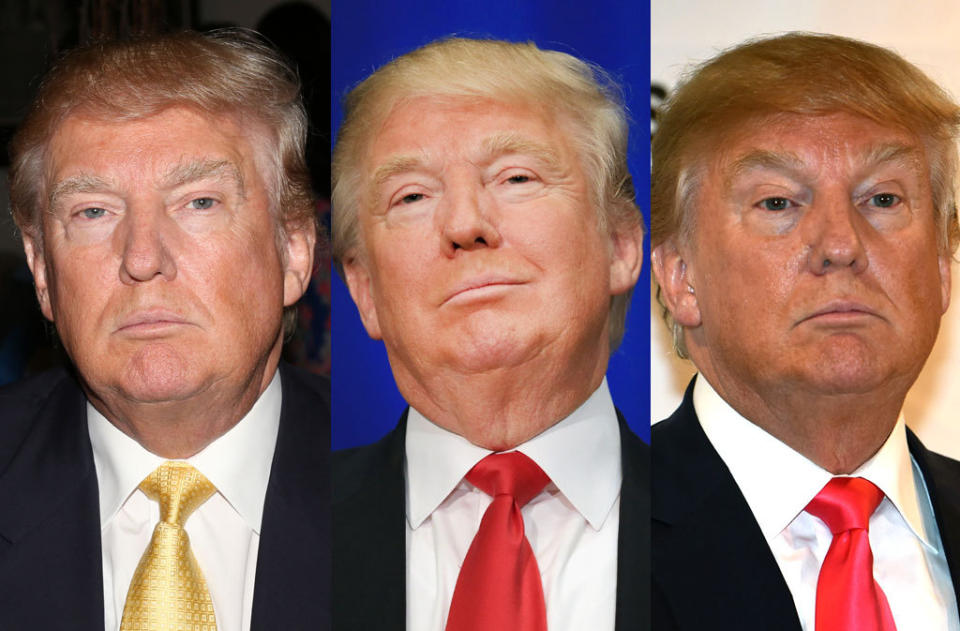
More orange as the campaign trail drags on? (Photo: Corbis Images/AP/Getty Images)
Redness is an indication of inflammation, which is very common when people are stressed, have poor diets, and are exposed to the extremes of high altitudes and dry forced air that come with constant plane travel. “In an election year, all of these elements play a key role in a politician’s life,” Tina Alster, MD, the founding director of the Washington Institute of Dermatologic Surgery who treats many of Capitol Hill’s biggest names, tells Yahoo Beauty. She tends to the issue with in-office laser and light treatments and insists her clients keep their skin well moisturized and protected with sunscreen every day to help soothe redness.
Related: Why Water Creams Are the Moisturizer You’ve Been Waiting For
But appearing on television doesn’t help matters, with a red nose exacerbated by all the stress factors suddenly made more obvious by the lights — and the camera, which not only adds 10 pounds but can also cast shadows to make skin look saggy onscreen in a way it doesn’t in person. So for more aggressive, in-office treatments, dermatologists often rely on advanced laser, radiofrequency, and injectable techniques, all of which come with minimal or no recovery. “In fact, I’ve been able to provide quick fixes to several candidates within hours of a rally or TV appearance,” notes Alster.
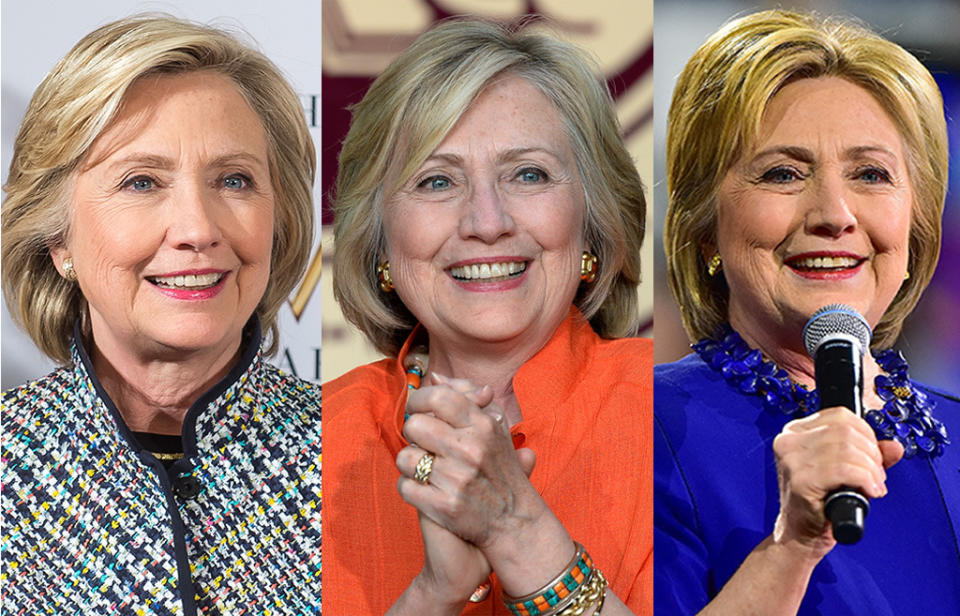
Hillary appears to be using more makeup lately, and it’s no wonder. (Photo: Getty Images)
Eyes are another hotspot for candidates. Dark circles and puffiness can make a candidate look tired — or worse, beaten and downtrodden. “The rigorous travel and schedule of the campaign trail is exhausting and fraught with exposure to environmental allergens like pollen and dust,” says Alster. When more sleep isn’t an option (and it rarely is), she advises daily use of oral antihistamines, like Claritin or Zyrtec while campaigning, in order to minimize puffiness and vascular congestion, which often contributes to dark circles.
Drinking more water than usual to flush out toxins from the body and avoiding salty and processed foods to minimize swelling are also key — though it can be hard for a candidate to turn down that greasy-spoon diner breakfast or chili corn dog at a state fair when surrounded by the hospitality and watchful eyes of potential voters. If eye-area puffiness, darkness, and sagging is really bothersome (or is catching attention and ridicule), Alster can quickly get a candidate in to treat eyes with lasers like Fraxel, Clear + Brilliant, or PicoSure to rejuvenate on a deeper level.
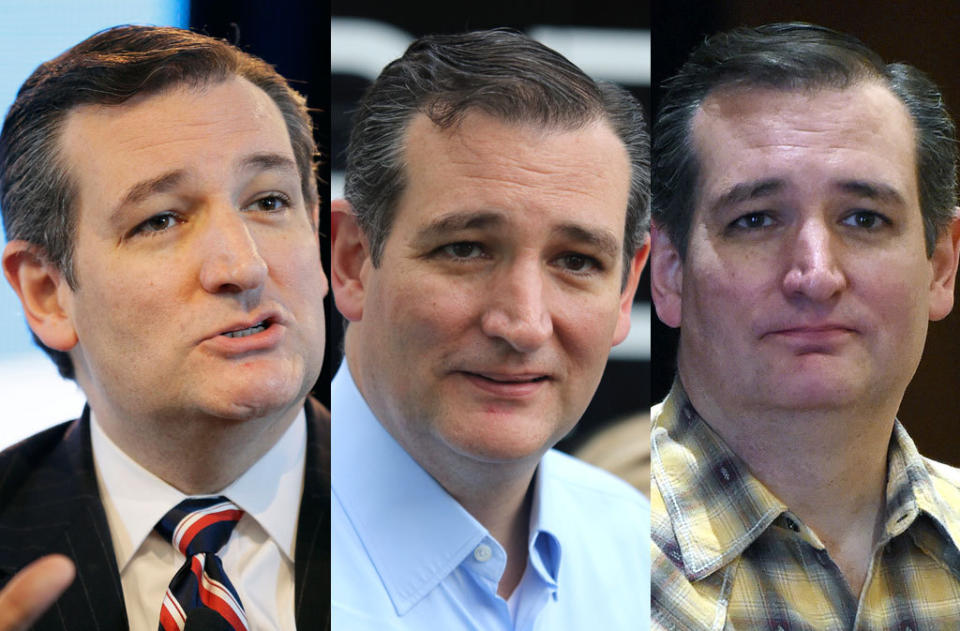
Ted Cruz is getting redder. (Photo: Corbis Images/AP/Getty Images)
On the body, an otherwise overlooked area — the armpits — often becomes a prime issue during election years. “Never let them see you sweat!” isn’t just a catch phrase, as clients come to Alster to seek serious help, especially before the debate circuit begins or before an onslaught of TV interviews. She uses Botox or Dysport injections to significantly reduce underarm perspiration so candidates can keep their cool under the bright lights and even more heated questions. (Perhaps Sen. Marco Rubio should have sought Alster’s expertise.)
And it’s not just the candidates who request ongoing cosmetic tweaks during a busy campaign schedule: Journalists, including familiar TV faces and even those who write for print (the latter because they’re not normally in the public eye, but in an election year, suddenly join the ranks of on-air personalities), seek improvement for all of the above issues as well, Alster says.
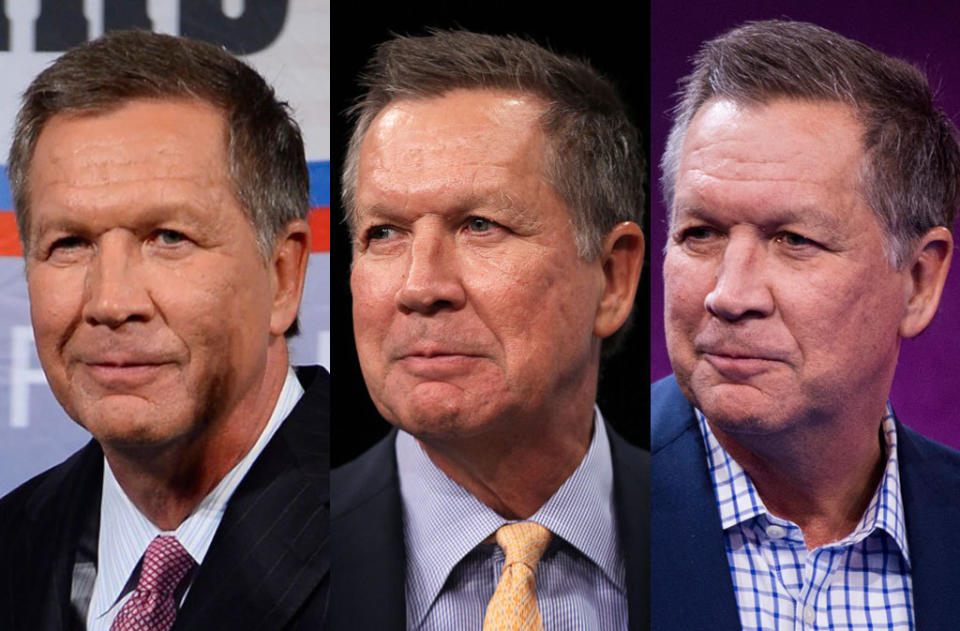
Kasich: Pinker by the week? (Photo: Corbis Images/AP/Getty Images)
By the time a campaign cycle and election year is over, the demands often cause the type of changes that even a restful couple of weeks away in the country can’t fix. All of these stressors can eventually break down skin collagen — the building blocks responsible for skin’s foundation. The reduction of collagen and elastin (which is important for skin’s ability to bounce back) leads to skin wrinkles and visible sagging. Meanwhile, a constant state of inflammation leads to a reduction in skin’s ability to repair itself after any injuries and makes it more vulnerable to the harmful ultraviolet rays from the sun. Indeed, the change in the mirror can be as shocking as the transition to gray that many presidents see in their hair.
To the candidates: We wish you good luck, Godspeed, and a really good dermatologist and makeup artist in your arsenal.

